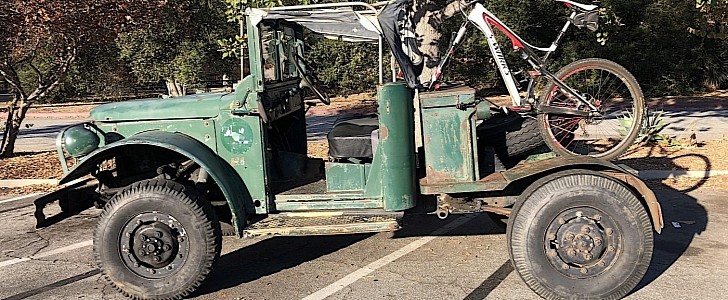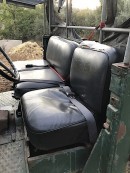Last week, we featured a very cared-for Dodge M37. Originally made in 1953, it was restored to full military prowess, sporting things like a bed-mounted spare tire, field tools, auxiliary fuel can, snorkel, and decals, in preparation for it selling at auction in March. The one we’re here to talk about today is its exact opposite.
The M37 nameplate was born in the Dodge lineup in 1951 as WC Series' successor, a line of trucks that saw more than its share of action during the Second World War. This family, though, was primarily used in the Korean War, but was also deployed in Vietnam, Laos, Cambodia, or Nicaragua.
1951 is the year this particular M37 comes from. It apparently was on the ground in Korea, used as an aircraft tractor, before it entered the car pool of the city of Redlands, California, as a public-works vehicle. The work it conducted in both its roles is clearly visible in the way it looks, as the truck seems not to have been cared for much since it entered private hands in 2005.
The truck just got sold last week during an auction on Bring a Trailer for the tiny sum of $7,500, and that leaves hope some restoration, or perhaps even customization project is in the works, with this M37 as the main star.
The basis for such work is there. The truck still packs the original powertrain, a 230ci (3.8-liter) flathead inline-six rated at just 78 horsepower and paired to a four-speed manual transmission and a dual-range transfer case. The engine shows around 28,000 miles (48,000 km) of use, but we’re told that is not the actual mileage.
It also comes with a bed-mounted storage bin, a bicycle axle rack, pintle hook hitch, and 16-inch wheels that look as if they’ve been designed with combat duty in mind.
Now that it found a new owner, we can only hope the truck will surface sometime in the future, looking completely different than it does now.
1951 is the year this particular M37 comes from. It apparently was on the ground in Korea, used as an aircraft tractor, before it entered the car pool of the city of Redlands, California, as a public-works vehicle. The work it conducted in both its roles is clearly visible in the way it looks, as the truck seems not to have been cared for much since it entered private hands in 2005.
The truck just got sold last week during an auction on Bring a Trailer for the tiny sum of $7,500, and that leaves hope some restoration, or perhaps even customization project is in the works, with this M37 as the main star.
The basis for such work is there. The truck still packs the original powertrain, a 230ci (3.8-liter) flathead inline-six rated at just 78 horsepower and paired to a four-speed manual transmission and a dual-range transfer case. The engine shows around 28,000 miles (48,000 km) of use, but we’re told that is not the actual mileage.
It also comes with a bed-mounted storage bin, a bicycle axle rack, pintle hook hitch, and 16-inch wheels that look as if they’ve been designed with combat duty in mind.
Now that it found a new owner, we can only hope the truck will surface sometime in the future, looking completely different than it does now.











